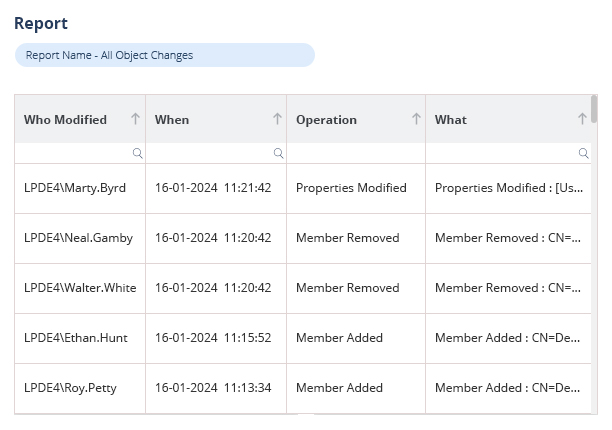
Service accounts are referred to as non-human privileged accounts through which an operating system executes one or more window-based applications or services. Poor management of service accounts can lead to major security risks, as hackers might steal their login info to take control.
Why Are Service Accounts So Often Over-Privileged?
Service accounts are given high permissions in order to run systems automatically. This is necessary in most cases, but it usually gives too much latitude. Some potential traps include:
- Granting domain-level admin rights: Most service accounts have higher privileges such as domain administrator privileges, which are seldom required for the intended objectives for which they are made. Giving domain-level administrative rights: To avoid any potential service interruptions, the administrators get extensive access for service accounts during the initial configuration. Practices of giving authorization can result in a situation in which the service account has much more access than it needs.
- Inheriting excessive permissions during mergers or acquisitions: Inheriting too many permissions during mergers or acquisitions: It is possible to give service accounts the same degree of privileged access as administrators. Businesses that use service accounts to automate operational processes will receive an inordinate number of permissions during a merger or acquisition so as to avoid system crashes. From service accounts being bought having the same rights as before a merger, unauthorized access may result.
- Lack of Role-Based Access control (RBAC): Failure to establish RBAC would result in service accounts inheriting more than they need. Service accounts are vulnerable to a variety of security risks without Role-Based Access Control (RBAC). RBAC reduces the possible harm from security lapses by limiting service accounts to the bare minimum requirements to carry out their functions. The absence of RBAC could result in service accounts having too many permissions, increasing their attack surface and attracting malicious actors. This could cause additional operational problems, illicit access, and data revelation.
- Improper Monitoring: Unlike user accounts, service accounts are not connected to a particular individual therefore cannot be tracked for use or held accountable. Most setups treat them as second-class citizens without properly recording or keeping track of their activities; they function quietly in the background. This absence of control could result in abandonment and make it simpler for hackers to misuse secretly stolen credentials.
Why aren’t Service Accounts Ever Rotated?
Here are some explanations of the major causes of this common security weakness, which also help to explain why service accounts are usually never rotated.
- Lack of Automation: Unlike human accounts, many service accounts do not rotate automatically. Without technology like group managed service accounts, rotation is carried out by hand. Manually rotating credentials across several systems can take time and be error-prone.
- Forgotten or Untracked: One of the reasons the service accounts are not rotated is that they are either untracked or forgotten. Once they are configured, the service accounts are left running. Without open tracking or inventory ownership, they are not included in rotation schedules, hence leading to set-and-forget credentials that stay in place for eternity.
- Hard-Coded credentials: Typically used to create service account credentials, code is also known as scripts. Every instance must have manual changes made to these credentials. Because dependencies are difficult to trace, modifications to one password might create issues with other systems. Even the teams themselves are unaware of the credential locations.
- High Operational: Many believe too aggressive without automation, coordinating rotation across several contexts and systems demands a lot of testing and updating. For hundreds or even thousands of non-human entities, rotation is challenging. It is a labor-intensive, error-prone hand chore that calls for coordination, testing, updates across settings, and much validation.
What are some Real-World Breaches of Service Accounts?
Following are some of the most well-known cyberattacks aimed at service accounts:
- Marriott Starwood Beach: In this case, Drop-Sign hackers stole a service account to grab API credentials and sensitive OAuth tokens. These tokens exposed major weaknesses in service account management letting unauthorized users access key integrations and client data. This type of breach threatens non-human identities when no one checks credentials for changes.
- Marriott Starwood Beach: Marriott Starwood Beach suffered a big data breach that compromised the personal info of more than 383 million guests. The attack started with the theft of a service account highlighting the risks of poor service account monitoring when a breach goes undetected for months.
- Okta Support System Attack: In 2023, a hacker broke into the company by stealing money from a service account. Looking into it more showed that the attacker had gotten hold of all user data; this points out how one service account can cause big problems. At first, people thought 1% of users would be affected.
- Verizon Data Breach :In February 2024, hackers broke into more than 63,000 employee records through an administrator account. This incident showed weaknesses in account security allowing intruders to get their hands on and tamper with private information.
Why Are Service Accounts Not Properly Monitored?
Attackers target service accounts that are frequently set up and then forgotten during corporate incidents, although they are not always adequately maintained for the following reasons:
- No Real-Time Alerts: Even if activity from service accounts is recorded, most organizations don’t build alerting systems to spot strange behavior—like odd login times, sudden privilege increases, or unfamiliar IP addresses. Without these real-time notifications, malicious actions can go unnoticed.
- Suspicious Activity Is Hard to Spot: Service accounts carry out routine, predictable tasks. When they’re repurposed to do harmful things—such as spreading malware or accessing sensitive information—their behavior often appears legitimate and simply blends into the background.
- No One “Owns” Them: Unlike regular user accounts, service accounts don’t have a designated human owner. With no one responsible for tracking their activity, rotating credentials, or deactivating unused ones, these accounts often fall through the cracks.
- Run Silently in the Background: Service accounts operate under the hood used by software or automated processes, not individuals, so they skip visible actions like login prompts. Most standard monitoring tools aren’t set up to detect them. In fact, one study found that 94% of organizations lack full visibility into these non-human accounts.
Which Strategies Do Organizations Prioritize?
The following important strategies should be taken into account for preventing the misuse of Service Account
- It is necessary to centrally secure service account-related privileged credentials in an encrypted credential safe. Control and oversight of access to these credentials are necessary to reduce the possibility of abuse.
- It’s critical to keep an eye on service account activity in order to spot any suspicious activity or illegal access attempts. To keep tabs on service account activity, spot irregularities, and react quickly to security breaches or policy infractions, efficient monitoring and auditing tools should be there.
- Instead of permitting a situation where the password never expires, it is simpler to implement better practices when it comes to service accounts or systems that are essential to the organization’s operations by assuring the usage of more secure choices like MFA.
- It is best to create service accounts with only the minimal amount of privileges necessary to do the desired tasks.
- Set expiration dates and rotate service account credentials frequently to reduce the amount of time attackers have to exploit your system.
How Does Lepide Help?
Lepide Auditor for Active Directory actively audits Active Directory and notifies administrators of significant changes, hence identifies and flags unnecessary access privileges granted to service accounts.. In addition to safeguarding service accounts, the Lepide solution may assist with managing dormant user accounts, analyzing comprehensive logs and reporting on service account activity, reducing unnecessary rights, and monitoring service account logon times. In addition to meeting compliance standards and conducting audits, this enables the organization to detect any compromised or misused service accounts.
Download a free guide and learn about the state of Active Directory in 2025 to learn more about strategies that involve Service Accounts, which are dangerous for AD users.



